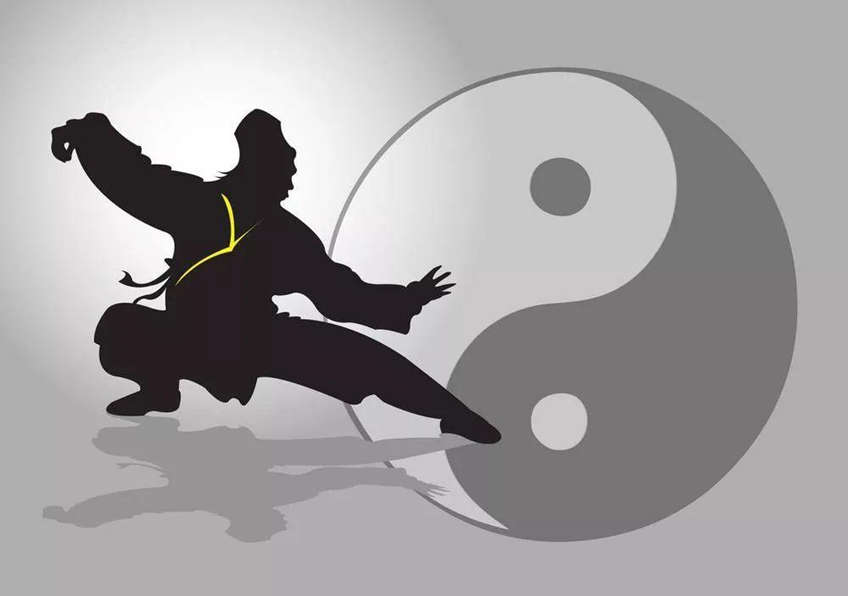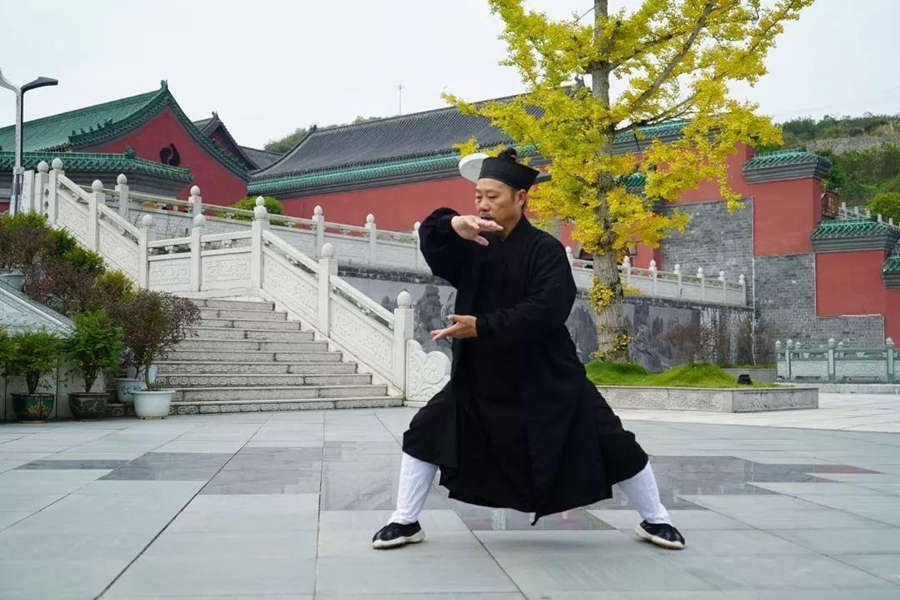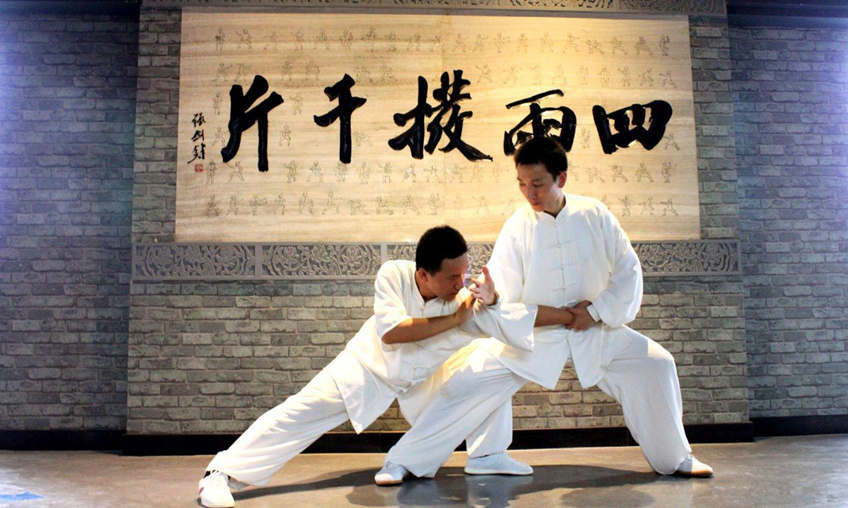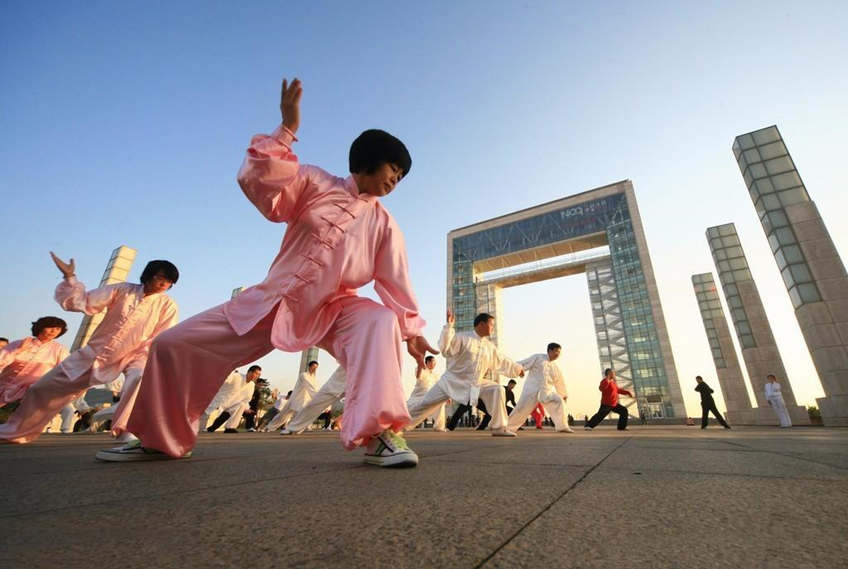Chinese Kung Fu - Tai Chi Quan
Taijiquan (or Tai Chi Quan), a perfect combination of Chinese martial art, philosophy of Confucianism and Taoism, Tai Chi theory of Yi-ology, and traditional Chinese medicine, is a popular school of kung fu exercise in China and beyond, and now a UNESCO world intangible heritage.
The movement of Tai Chi Kung Fu was formed and developed based on the changes of yin-yang and five elements of Yi learning, the study of traditional Chinese meridians, the ancient Chinese guiding technique and deep breathing technique. Normally the Tai Chi movements are soft, slow, light, firm yet flexible.
On December 18th, 2020, Tai Chi was added to UNESCO's cultural heritage list.

Taijiquan Facts
- Chinese name: 太极拳 (tài jí quán)
- Other name: Tai Chi Chuan, Tai Chi boxing, Tai Chi martial arts, Tai Chi kung fu
- Main styles: Chen Style Tai Chi, Wu Style Tai Chi, Sun Style Tai Chi, He Style Tai Chi
- The philosophical basis: Yi-ology, TCM, Confucianism, and Taoism
- History: over 200 years
What is Tai Chi - Tai Chi meaning
The etymology of Tai Chi comes from "Zhouyi • Xi Ci", " At the beginning of chaos, there was tai chi. Tai chi produced two instruments - Yin and Yang" "Tai" means big, and "ji" means beginning or vertex. It means that "Tai Chi" is the origin of all things, and suggests the "Supreme Ultimate" state. Tai Chi diagram is one of the most primitive world outlooks of ancient Chinese people. The combination of boxing and tai chi theory gradually formed Tai Chi boxing. Therefore we can see that the name Tai Chi Chuan derives from “Tai Chi”, and referring to the endless changes in the methods of its movements.
Origin and History of Tai Chi Chuan
There's still no consensus yet about who created Tai Chi and when it was created. The following are three ideas of the origin of Tai Chi Quan.
Tai Chi Quan was created by Zhang Sanfeng
In history, there were many legends and controversies about Zhang Sanfeng, who was the founder of Wudang Kung Fu and considered by many people as the originator of Taijiquan. According to Huang Zongxi, a philosopher and historian in the late Ming and early Qing Dynasties, "Shaolin Kung fu is famous for its fierce boxing. However, the opponent can take the opportunity to fight back. There is the so-called internal kung fu school, coping with all motions by remaining motionless, which is very different from the Shaolin Kung Fu. Internal kung fu was probably originated from Zhang Sanfeng in Song Dynasty, and Wang Zhengnan was a descendant of internal kung fu.”
It is also said that the 13 postures of Tai Chi was created by Zhang Sanfeng.

Hu Jingzi of the Tang Dynasty created Taijiquan
The Hu Jingzi was mater of Song Zhongshu, who handed down Tai Chi to Yin liheng. Yin changed the name of tai chi into the Houtian Fa (literally (wushu acquired by nurture), with postures including quier, roll, squeeze, press, pull, pull-down, split, elbow and lean, which are the same functions as the 13 postures of Tai Chi.
Chen Wangting created Taijiquan
Chen Wangting of the later Ming Dynasty and early Qing Dynasty was the originator of Chen Style Tai Chi. Kung fu scholar Tang Hao visited Chenjiagou on the spot (the hometown of Chen Wangting and therefore known as the birth place of Tai Chi), and discovered Chen Wangting's poem, which said, "Sighing at the time, when I was armed, wiping out the troops of Qing Dynasty in Shandong. My king praised and rewarded me. Now I am old and have created Taijiquan in my spare time to teach my disciples and grandchildren.”
Features of Tai Chi Quan Training
Taijiquan Kung Fu is a traditional physical practice, and an essential part of Chinese wushu. Taijiquan is influenced by traditional Chinese philosophy and dialectical thoughts. it is called "philosophical boxing", not only because of its name “Tai Chi”, but also for the philosophical movements and technical requirements.
A special art of attack and defense
Taijiquan is a boxing exercise, in line with the principles of boxing - the movements of Taijiquan conform to the law of attack and defense, which is also one of the essential differences between the Tai Chi training and other sports such as gymnastics, dance, and guidance exercise.
Tai Chi practice is based on philosophy
Ever since it was created Taijiquan was guided by a profound philosophy, which is integrated into the specific training forms, postures and movements. For instance, the dialectical philosophy of Yin and Yang specifically refers to the void and reality, opening and folding, dynamic and static.
Tai Chi exercise benefits body
Taijiquan blends the principles of traditional Chinese medicine, and helps to keep human body fit and healthy, which has been proved by a large number of modern scientific experiments.
Tai Chi training basic principles
Although different styles of Taijiquan differ in posture, movement, strength and speed, they also have something in common and follow the similar movement principles.
Core principle of strength - Strength is a kind of comprehensive quality peculiar to Tai Chi Quan. It is based on the loosening of the bone seam between the joints, and gets the power from the elongation of the ligaments and tendons, and the moderate strength of the muscles. It is a kind of strength quality generated by the domination of the brain consciousness, and extremely flexible and can vary in strength, direction, point, and speed depending on the opponent.

The principle of mutual contention – From the various technical requirements of Tai Chi fighting, we can see that the opposite force is applied to each part of the body in different directions, such as up and down, front and back, left and right, inside and outside, so as to lengthen the body to support the eight sides and produce the strength of Tai Chi.
Every move connect anther moves principle – According to Tai chi, the heaven and earth is a macrocosm of the universe, while the human body as a micro universe. Human body must move all the time. This move is under the conscious control in the whole coordinate movement, including internal organs, body and limbs skeleton. Therefore Tai Chi requires the whole body from the mind to the all fours and all parts of parts to participate in the movements as much as possible.
Successively connecting principle - This mainly talks about the transfer process of strength, requiring the whole body to loosen. The waist is the body's largest joint location, equivalent to a transfer station that transmits the strength and power to every part of the body.
Principle of Yin and Yang - This is a general principle. Tai Chi cannot be separated from Yin and Yang theory. Tai Chi is a dialectical movement of the body. On one hand, Yin and Yang should be separated from each other; on the other hand, Yin and Yang must be fused together.
Chen Style Tai Chi Quan
The Chen style Taijiquan is characterized by softness, with firmness in softness, and dominated by the waist, with the strength of spiral winding silk everywhere. It follows the features of its own school and retains the traditional Tai Chi movements, like jump, leap up, flash, pull, fold, and release, etc.
Chen style Taijiquan has passed on over generations for over 200 year and last till now, and has its twenty-first successors - the Tai Chi maters continue to carry forward Tai Chi Quan, and some have established Tai Chi schools in Chenjiagou in Jiaozuo, Henan Province, e.g. Chengjiagou Taiqiquan Kung Fu School..
Tai Chi Health Benefits
What does Tai Chi do for your body? There are many benefits if practicing Tai Chi. It helps to cultivate one's morality, dredge the meridians and collaterals, promote blood circulation, enhance and improve the ventilation function of the lung, exercise the muscles and bones, promote qi and blood circulation, and prevent diseases. The following are the major Tai Chi health benefits.
1. Abdominal breathing increases lung enlargement
2. Tai Chi movements guide qi and carries qi to veins, hair, teeth and tongue. It exercises the blood vessels of the whole body, including microvessels, and strengthens the blood circulation function
3. When doing Tai Chi exercise, one inhales, the pores of the body open, while one exhales, the pores of the body close, which strengthens the metabolism. And the endocrine channel is unblocked, thus the virus garbage is not easy to stay. Therefore, minor illnesses do not arise and major illnesses do not last long.
4. The symmetrical movements of Tai Chi training make up for the lack of human function acquired

5. Tai Chi emphasizes the thoughts and attention focusing, thus can improve the sensitivity of the nervous system.
6. Tai Chi is one of the best sports for the elderly. Seniors can benefit a lot from Tai Chi exercise. Tai Chi movements Strengthens the whole body tendons, bones, skin and internal organs of the elasticity, that is, flexibility. The extension of flexibility, itself is longevity. On the contrary, if any organ in the human gut loses its elasticity, it means the end of life.
7. Practicing Tai Chi can lose weight. Through a unique way of breathing, Tai Chi enhances the body's ability to absorb oxygen, increase the contact area of fat, can accelerate fat burning
8. just like Yoga, Tai Chi aultivates a state of peaceful mind that is detached from vulgarity.
Tai Chi for Beginners/Seniors/Kids
Tai chi requires no special equipment and is fit for all people.
For the elderly people, they are recommended to practice Yang style Tai Chi or similar style, as the movements are softer and slower, and easy to remember. Practice to nourish qi, regulate qi, cultivate qi, practice qi, nourish the heart and nourish the blood.
For Children, first cultivate their interest of Tai Chi. It is suggested to teach children short and easy routine and movements. Add push/pull-hand exercises to make kids feel fun in confrontational exercises.
For Tai Chi beginners, 1) start with simplified Taijiquan and simple routines that last for 4-5 minutes. 2) Make sure you practice the correct posture in a correct way; 3) Find yourself a Tai Chi master, who can guide you in the beginning, give instructions and correct mistakes; 4) Learn some basic skills, such as leg pressuring, kick, squat horse steps and other pull ligament to increase the strength of the waist and legs. 5) You must learn to protect yourself. Do preparation before practice; after practice, pay attention to finishing and relaxing activities.
Easy Tour China offers customized China Kung Fu tours with Tai Chi training and fighting class for beginners, seniors or family with kids.
Related Reading